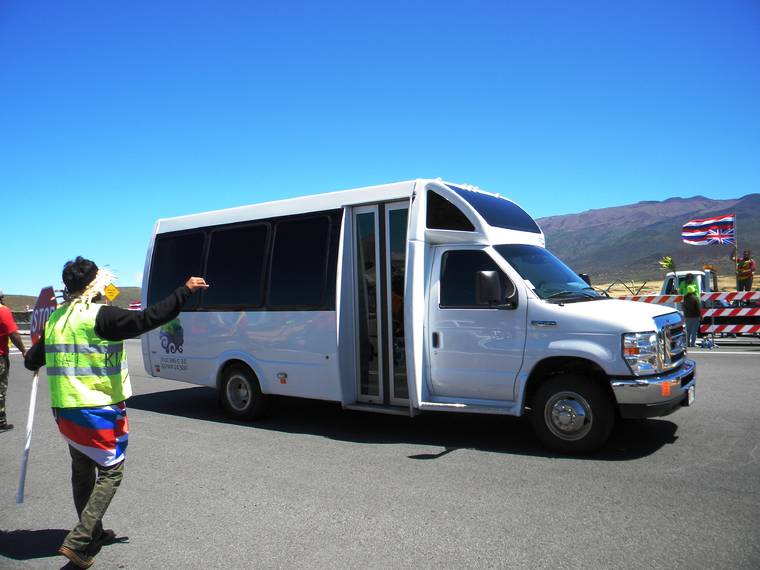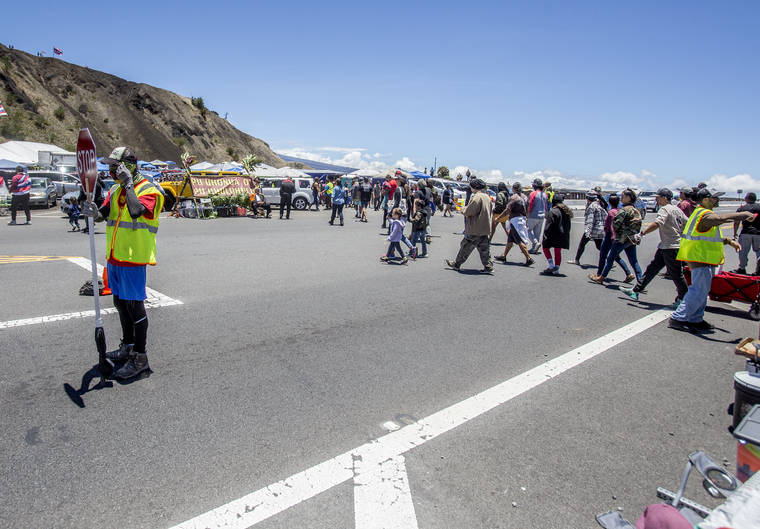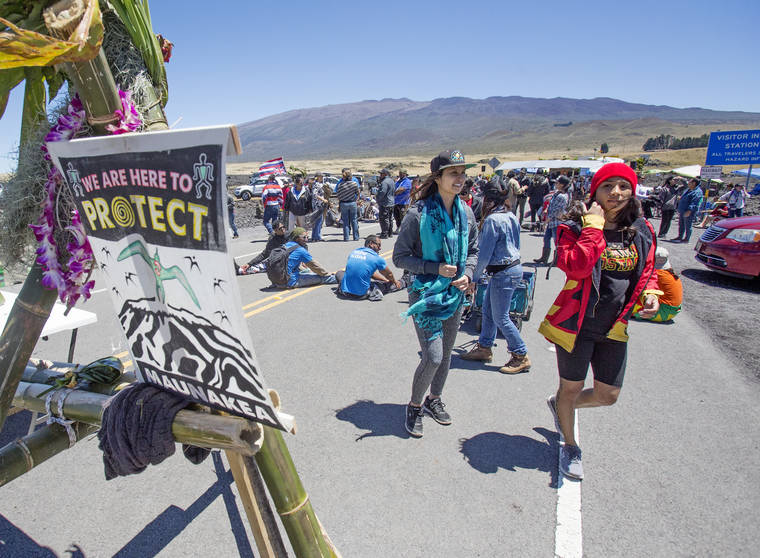Down for the count: Maunakea study counts visitors, impacts
HILO — A study of public and commercial tour capacity on Maunakea is proceeding, even though tourism on the mountain has been at a standstill for more than a month.
The study began July 1, just two weeks before the Maunakea access road was closed, as protesters gathered at the base of the road to block construction of the Thirty Meter Telescope just below the summit. The protesters, who call themselves “protectors,” oppose the construction of the $1.4 billion telescope on environmental and religious grounds.
The study is expected to continue for three years, ending June 30, 2022, Daniel Spencer, professor of tourism management at the University of Hawaii School of Travel Industry Management, said Thursday. Spencer, a fellow in the Center for Sustainable Coastal Tourism at UH-Manoa, is the principal investigator for the study.
Office of Maunakea Management Director Stephanie Nagata said the study was planned before the road was closed.
“I don’t think we anticipate the road to the mountain is going to be closed forever,” Nagata said. “I anticipate at some point in time the road is going to be open.”
The study is the result of increased visitor use of the Visitor Information Station and Mauna Kea Science Reserve for sunrise and sunset viewing, sightseeing, educational programs, hiking and other purposes leading to concerns about impacts on the natural, cultural and scientific resources on UH managed lands. The study will evaluate current visitor volume, characteristics and demographics, and impacts as well as commercial tour operations, according to an Office of Maunakea Management news release.
“The new Daniel K. Inouye Highway (Saddle Road) has made the road safe, easy to drive and now provides easy access to Maunakea and increased visitations, many of which are visitors from outside Hawaii,” Nagata said in an Aug. 8 statement. “This study will help determine impacts from visitors and commercial tour operations so we can develop appropriate management strategies.”
Among the questions the study seeks to answer: How many vehicles annually transport visitors to the Halepohaku and summit areas? How many visitors annually visit these areas? How many visitors engage in various forms of recreation in these areas?
What are the characteristics and behavior patterns of visitors to these areas, including their demographic and socioeconomic characteristics, expenditures in the local area, and participation or non-participation in group tours? What are the physical and sociocultural impacts associated with current visitation levels, including impacts on Native Hawaiians, local residents, observatories, and natural, cultural and scientific resources?
Can more visitation be accommodated or should it be curtailed? If too high, what should it be reduced to? If too low, what should it be increased to? What is the capacity for commercial tours, including the number of vehicles and time of day of visitation?
How much admission should visitors be charged? Should certain types of visitors, such as local residents or Native Hawaiians be granted free or discounted admission? How have comparable land management agencies, such as the National Park Service, handled such issues?
Currently, eight tour companies have permits to conduct Maunakea tours at the summit. Usually, residents and visitors with their own transportation can drive up to the summit, or stop farther down the mountain at the visitor center, for free.
Until further notice, however, access to the mountain is closed, except to observatory, support and stewardship personnel and certain cultural practitioners.




